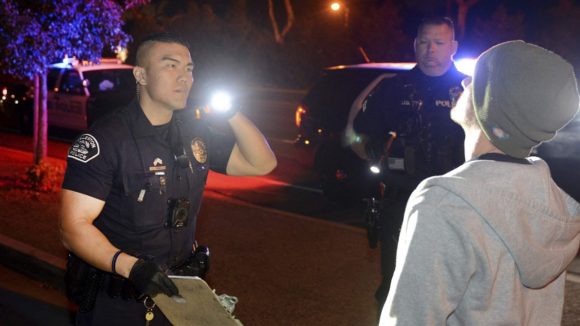Efforts to curtail impaired driving and related accidents by repeat offenders on the road should address the underlying problems prompting the unsafe behavior, according to a new report from state highway officials and the liquor industry’s drunk driving prevention group.
The report, High-Risk Impaired Drivers: Combating a Critical Threat, released by the Governors Highway Safety Association (GHSA) in partnership with Responsibility.org, calls for “a systemic and holistic approach to high-risk impaired drivers” that focuses on the individual and the need to treat the underlying problem prompting the unsafe behavior.
The report argues that “individualized justice” is more effective at deterring high-risk impaired drivers than the “typical legislative response of heavy fines and incarceration.”
Many offenders have not only a substance use disorder, but also a mental health disorder, according to research conducted by Cambridge Health Alliance at Harvard Medical School. The latter, however, often goes undetected, the report says.
“The traditional criminal justice approach holds these offenders accountable for each impaired driving incident, but to ensure that these high-risk impaired drivers don’t re-offend, we need to expand our approach beyond detection, arrest and conviction,” said Darrin Grondel, director of the Washington Traffic Safety Commission and chair of GHSA. “The aim of this new report is to encourage states and their partners to take a more holistic approach to the problem by identifying and treating the cause of the offender’s behavior to reduce recidivism and promote long-term behavior change.”
According to the report, alcohol-impaired fatalities accounted for 29 percent of all U.S. motor vehicle deaths in 2018, the lowest percentage since 1982, when the National Highway Traffic Safety Administration (NHTSA) began reporting alcohol data. But even with this progress, in 2018 an average of one alcohol impaired driving fatality occurred every 50 minutes.
The report defines a high-risk impaired driver is a person who lacks the restraint or self-control to resist driving impaired and meet one or more of three criteria:
- Drive with a blood alcohol concentration (BAC) of 0.15 g/dL or higher after consuming alcohol
- Have consumed a combination of drugs and alcohol (polysubstance user)
- Are repeat offenders (i.e., have more than one DUI arrest)
Repeat offenders cause about a third of impaired driving deaths each year, while high BAC offenders are involved in more than 60 percent of alcohol-impaired fatalities. In 2018, 66 percent of drivers involved in fatal crashes had a BAC greater than 0.15 g/dL. Alcohol, however, is not the only impairing substance, as there has been a 16 percent increase over the past 10 years in the number of impaired drivers killed in crashes who tested positive for both alcohol and other drugs, the report says.
In addition to screening and assessment, the report urges testing drivers for the presence of not only alcohol, but also other drugs.
“Right now, our approach is to catch, convict and punish the high-risk impaired drivers and then release them. It’s a cookie-cutter approach that doesn’t treat the underlying problem,” said Chris Swonger, CEO of Responsibility.org and the Distilled Spirits Council of the United States (DISCUS). “Instead, we need to identify the root cause of each individual’s behavior and then determine what treatment along with sanctions should be administered so that we break this cycle and prevent impaired driving deaths.”
GHSA represent the highway safety offices of states, territories, the District of Columbia and Puerto Rico.
Topics Personal Auto
Was this article valuable?
Here are more articles you may enjoy.



 Adjusters Launch ‘CarFax for Insurance Claims’ to Vet Carriers’ Damage Estimates
Adjusters Launch ‘CarFax for Insurance Claims’ to Vet Carriers’ Damage Estimates  Wildfires, Storms Fuel 2025 Insured Losses of $108 Billion: Munich Re Report
Wildfires, Storms Fuel 2025 Insured Losses of $108 Billion: Munich Re Report  10 Highest Class-Action Settlements in 2025 Eclipsed $70B Total: Duane Morris
10 Highest Class-Action Settlements in 2025 Eclipsed $70B Total: Duane Morris  New York Governor Hochul Vows to Tackle Insurance Affordability, Litigation and Fraud
New York Governor Hochul Vows to Tackle Insurance Affordability, Litigation and Fraud 

